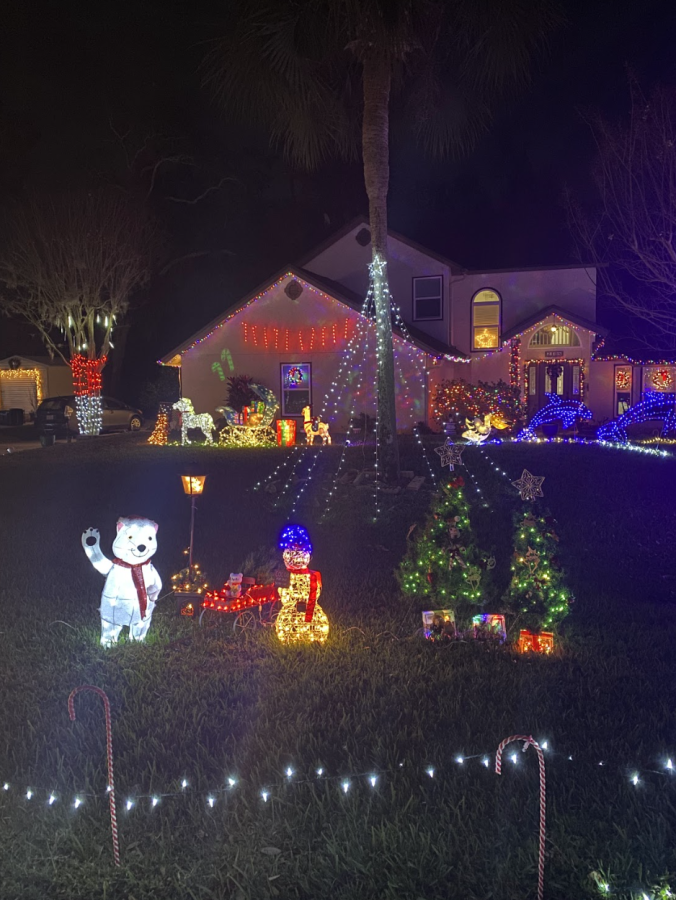Can There be Too Many Christmas Decorations?
Every year as soon as the calendar flips to show Dec. 1, the twinkling lights and plastic snowmen start to appear on lawns across towns. Some might put them up sooner than others, some might not put any up at all, but the question still stands.
Can you have too many Christmas decorations?
Decorating for the holidays can date back centuries.
According to Quality Logo Products Blog and Wikipedia, Historians believe that the Romans were the first to decorate for Christmas. Wreaths, gifts, trees, and lights all were used as a part of the pagan festival, Saturnalia. Later in the 1500s-1600s, Germans decorated “paradise trees” hung with apples. As people started to migrate to different places, they kept the holiday spirit the same.
Once the tradition was brought to America, people were worried as it came from paganism. Nevertheless, they adapted the practices and made it work.
In 1856, Franklin Pierce was the first president to put up a Christmas tree in the White House. In 1931, the iconic Rockefeller Center tree first made its appearance. It was only 20 feet (6.1 meters) tall and had no ornaments but was decorated with cranberries and paper garlands.
Since then Christmas only started to get bigger and more cheerful.
According to WBIW, In 2020 Christmas lights alone were up 194% percent from 2019. In 2021, 94% of people admitted to celebrating Christmas while 84% say they decorated for the holiday season. After the holidays, 22% said they come down a week after Christmas while 78% of people keep them up until the New Year!
The average person will spend three hours decorating and around $70 a year on decorations but when does it all become “too much.”
According to Healthline, one of the biggest concerns surrounding decorations is the Christmas lights. Decorations such as Christmas lights can contain toxic substances such as lead. In 2014, 13% of holiday products sold by big retailers like Walmart and CVS contained lead levels that exceeded what is deemed safe for children. It’s hard to tell whether Christmas products contain lead but buying in bulk can expose families to dangerous, life-threatening toxins.
How much families pay for electricity is also affected during the decorating season. USA Today did a study that showed with average LED holiday lights there is a $5 to $7 increase. Average decorations with incandescent lights cause a $33 increase.
Houses that may use elaborate decorations have a $47 increase and elaborate houses with incandescent lights have a $350 increase.
Although, having a festive holiday isn’t all bad.
Psychologist Deborah Serani says that decorating can improve your mood. She says “For a lot of us, Christmas is a magical time, it’s a time of innocence, it’s a time of joy.” For some, decorating can release a spike of dopamine in the brain, the happy chemical that is proven to make you happy.
Christmas decorations also bring beautiful sights to look at. This can turn a gloomy town into a winter wonderland.
It’s hard to answer whether one can have too many Christmas decorations. Simply put it’s a yes…and it’s a no. The blog, Deavita, says that you shouldn’t overdo Christmas and should keep it “classy” but you can’t deny the nostalgic feeling that decorating can bring to people.
If you are someone who loves decorating for the holiday season be cautious about how many lights you put up. For the sake of the energy bill, try keeping it simple this year, but for your own happiness, do whatever you find makes you happy.
After all, isn’t that what the holiday season is all about.
Emily is currently a Senior. This is her second year working on staff.

